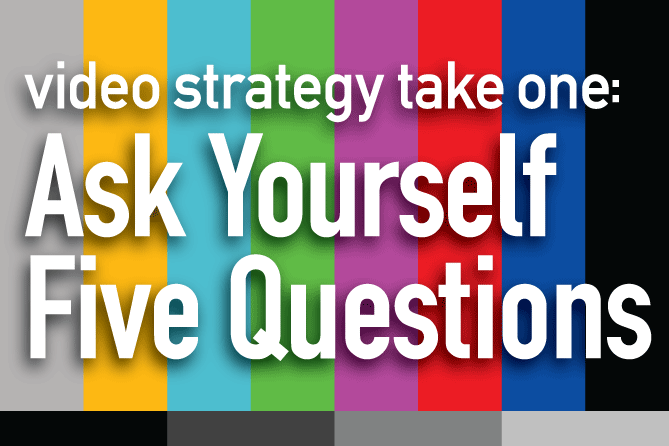
My background is video storytelling, so I thought I’d start a series of posts devoted to what has become a very popular medium. I’ll be exploring why, how and when video content marketing is a good strategic tactic for nonprofits.
Video content strategy
Every business and organization wants to engage with their customers and audience. And one of the most effective marketing tools out there is online video. Great video should make you feel something. It can be a valuable way to tell a story or to teach a lesson. Many organizations make videos that are succinct, and engaging. But if you’ve spent any time on Youtube, you know there are some videos that could have used a little more planning and a lot more focus. Anyone can rush into video production without thinking things through and then they end up with a very off message YouTube link. Quick, casual videos certainly have their place. But even then you need to think about your video content strategy and decide whether your ideas will meet your marketing goals. Anyone can make a video right? Well yes, but just like anything else, planning counts.
 Ask yourself five questions
Ask yourself five questions
Before you speak with your marketing agency or your video production team, here are five questions you should ask yourself and your communications group. Your answers will not only help to define your project but it will help the people producing the video stay true to an overall vision.
1. Who is the TARGET AUDIENCE?
Who is the video for? Do you have a persona that you have created to reflect that group? Knowing whom you are producing content for will affect the style, the message, the visuals, the music; the audience will affect every aspect of your content. Once you define your viewer, only then will you know how to communicate with them.
2. What is the MESSAGE?
What do you want to say? Words matter. Begin to think about the words you use to describe your organization. It’s not just what is being said. It’s also about what you see and the message you are sending with your visuals. Your message will inform the style of your video and also how your story is told. Simplicity is key. Distill your message down to a few important points. Too many conflicting ideas or concepts can be confusing. You want to control the way the viewer takes in the message.
3. Which VISUALS to use?
What visuals are in keeping with your message? Use the medium! The visual is just as important in defining your message as the scripted content. Look around. What pictures best describe your organization or your brand? And make sure you stay consistent with your other marketing materials.
“Images are a shortcut to your brain, and we are programmed to react to visuals more than words.” — The Power of Visual Story Telling, p.16
Instead of explaining how to do something, show it. Spend time watching videos. High end, low end and everything in between. Sometimes watching other videos will help you learn what you like and what you don’t like. And if you are working with a production company you have never worked with, it might be a way to help them understand your direction.
4. What are the GOALS and objectives?
What do you want to come of your project? Is it to get likes for your Facebook page. Or maybe you want to train your outreach staff. It’s important to set a vision for a successful return on investment (ROI). Think about what a successful video means for you. And once you have decided on those metrics, make sure you are very clear with your call to action. Have a definite post-viewing objective and help your viewer understand it.
5. How will the video be USED?
How will the video be used now and in the future? Maybe your team is planning to produce content for your mobile Instagram audience so your fans can connect with your lifestyle brand. This kind of video content is ephemeral, and that’s ok. You are directly connecting with your followers. That kind of micro-content is quite different from a three- minute video used to promote your nonprofit at an event for fundraisers. Find the best tool to tell your story and start a conversation with your viewer.
Video strategy take one
Videos can be expensive and the more specific you are in thinking through your project the more likely you will be happy with the outcome of the production. Make sure you write down your answers. Just the act of writing a creative brief or description of your goals and needs will help to define your video. It will be a conversation starter for the people producing it and it will be a guideline for your team to stay true to. The process of planning and making a video can be a lot of fun and very rewarding. It’s creative, it’s collaborative and it’s all about storytelling. By answering these five questions, you will be well on your way to defining your next production for success.



